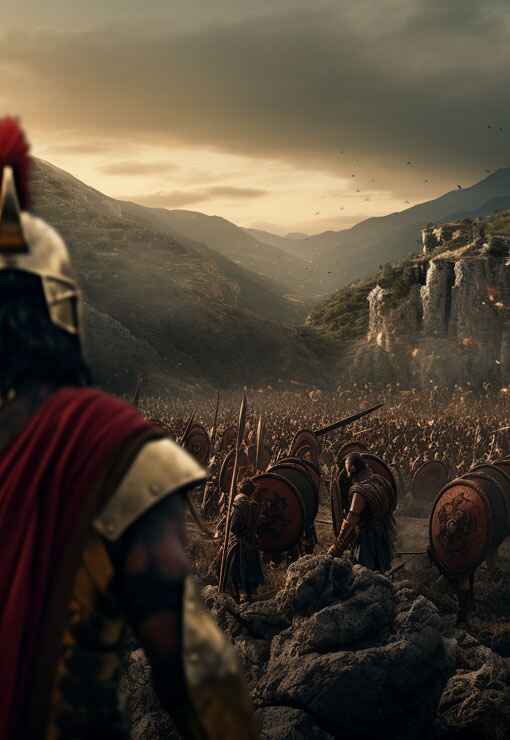

Ancient Greek vase painting evolved significantly over time, with two major techniques standing out: black-figure and red-figure painting. Each method has its unique characteristics and historical significance, reflecting the artistic and cultural developments of their respective periods.
Black-Figure Technique: The black-figure technique was developed around 700 BCE and remained popular until the late 5th century BCE. In this method, figures were painted in a black slip on the natural red clay of the vase. Details were then incised into the black figures, revealing the red clay beneath. This technique was particularly effective for depicting detailed scenes and intricate patterns.
Red-Figure Technique: Introduced around 530 BCE, the red-figure technique reversed the black-figure process. Artists painted the background in black slip, leaving the figures in the red color of the clay. This allowed for greater flexibility and detail in the depiction of human anatomy and movement, as brushwork could be used for finer details rather than incision.
Artistic Evolution: The transition from black-figure to red-figure painting marked a significant evolution in Greek art. The red-figure technique offered more naturalistic and dynamic representations, accommodating the growing interest in humanism and the accurate portrayal of the human body. Artists could express more complex and nuanced scenes, enhancing the storytelling potential of their works.
Iconography and Themes: Both black-figure and red-figure vases depicted a wide range of subjects, including mythological scenes, daily life, athletic competitions, and religious rituals. Common themes included the exploits of heroes like Heracles and Theseus, the lives of the gods, and scenes from epic poetry. These vases served not only as functional objects but also as visual narratives that conveyed cultural values and beliefs.
Notable Artists: Several artists and workshops gained fame for their work in both techniques. Exekias was renowned for his black-figure vases, known for their detailed and expressive scenes. The Andokides Painter and the Berlin Painter were prominent figures in the red-figure technique, celebrated for their innovative compositions and skillful execution.
Social and Cultural Impact: Vase painting played a crucial role in ancient Greek society, reflecting and reinforcing social norms, religious practices, and communal values. Vases were often used in domestic settings, religious ceremonies, and as grave offerings, underscoring their significance in both public and private life. The scenes depicted on these vases provide valuable insights into ancient Greek culture, from mythology and religion to everyday activities.
Legacy: The legacy of ancient Greek vase painting, particularly the black-figure and red-figure techniques, continues to influence modern art and archaeology. These vases are key artifacts in understanding Greek history, offering a visual record of the past. Museums and collections around the world preserve these works, highlighting their enduring artistic and historical value.

Did you know that the red-figure technique allowed Greek artists to achieve more detailed and realistic depictions of the human body? This technique enabled them to use brushes for finer lines and details, enhancing the overall expressiveness and complexity of their artwork.
Ancient Greek art and architecture, with its harmonious proportions and timeless elegance, continue to inspire awe and admiration millennia later.
Discover
Greek mythology, a rich tapestry of gods, heroes, and mythical creatures, captivates the imagination with its tales of love, betrayal, and epic adventures that delve into the depths of the human psyche.
Discover
Ancient Greek history, marked by remarkable achievements in democracy, philosophy, and warfare, shaped the foundation of Western civilization, leaving an indelible legacy of innovation and cultural influence that continues to resonate to this day.
Discover
The ancient Greek Olympics, held in Olympia every four years, celebrated athleticism, unity, and cultural pride, serving as a testament to the enduring spirit of competition and excellence that transcends time and borders.
Discover
Ancient Greek wars, such as the Persian Wars and the Peloponnesian War, were pivotal conflicts that shaped the course of history, highlighting the struggle for power, independence, and the clash of civilizations in the ancient Mediterranean world.
Discover
Ancient Greek culture and society, characterized by its emphasis on art, philosophy, and civic engagement, fostered a vibrant intellectual and social landscape where innovation flourished, democracy thrived, and the pursuit of knowledge and excellence was celebrated as fundamental values of civilized life.
Discover
Find out more about ancientgreece.com